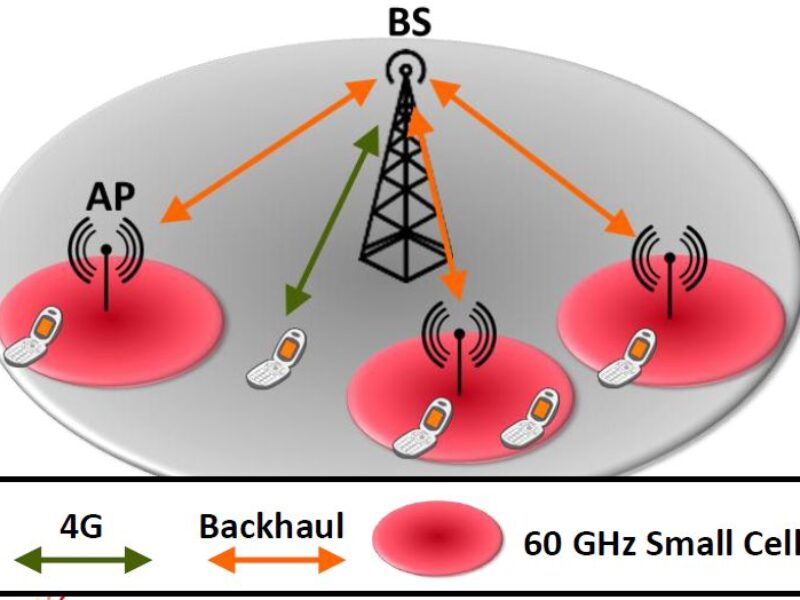
EU project takes mm-waves beyond WiGig
Taping both into the unlicensed 60 GHz and light-licensed 71-86 GHz E-band, the research project is looking at expanding mobile user access points with the development of small backhaul cells with data transmission capacities up to 10 Gbps for backhaul and 5 Gbps for mobile users.
A heterogeneous network integrating small backhaul cells within larger base station cells could offload data from the macro cells to the small cells while improving user data rate near these more densely installed access points.
The research will take existing 60GHz SiGe or CMOS technologies (such as that developed for WiGig or for automotive radars) and push them further by exploring different radio protocols and multi-module implementations with different antenna designs to shrink further existing backhaul cells and mobile-terminal radio transceivers.
In theory, the benefits for such an approach include a more flexible deployment in dense urban areas with a reduced transmit power (both from the terminals and from the base stations). But as well as defining new radio and antenna technologies, the MiWaveS project will have to tackle significant challenges on the system architecture, networking functions and algorithms, according to Dr. Laurent Dussopt, MiWaveS project manager and a research engineer at CEA-Leti.
“In order to go beyond the indoor WiGig range of a few meters, we’ll have to rely on precise beam-forming through phased-array antennas” Dussopt told eeNews Europe in an interview.
“The small cells could use spatial multiplexing in order to focus different beams to different mobile terminals. This may be done sequentially, or in parallel, but this is where we’ll have to explore different architectures to find the right compromise between range, distributed data rates, but also energy efficiency and cost” he added.
“Today’s WiGig solutions use fairly large modules with phased-antenna arrays comprising from 32 to 48 elements”, says Dussopt. “We are looking at a multi-module approach, using smaller and more cost-effective chips in order to distribute the complexity and reliability of the small cells.
Such small cell access points could cost around a few tens of Euros, while the radio module to be integrated inside mobile terminals could be much simpler and cheaper”.
As for the flexibility of installation and maintenance, the research consortium will also look at new algorithms to enable a self-organizing network able to automatically integrate new detected cells or to re-route or coordinate traffic efficiently when a small cell is removed.
Last but not least, included in the MiWaveS project, mm-Wave exposure will be investigated through simulations and then through preliminary tests in order to position this new technology compared to existing microwave radio technologies. In principle, the focused radiation (beam forming) and the lower transmitted RF power would lower our overall exposure to electromagnetic fields.
The MiWaveS project is partially funded by the European Commission’s Seventh Framework Program
(FP7) within the Work Programme for Information and Communication Technologies under the objective “Network of the Future”. The MiWaveS consortium relies on the diverse and complementary expertise of its members: CEA-Leti (FR), Telecom Italia (IT), Orange (FR), Nokia (FI), Intel Mobile Communications (DE), National Instruments Dresden (DE), STMicroelectronics (FR, IT), Sivers IMA (SE), Optiprint (CH), VTT (FI), Tech. Univ. Dresden (DE), Tecnologias Servicios Telematicos y Systemas (ES), Univ. of Rennes 1 (FR), Univ. of Surrey (UK).
Check the MiWaveS project at www.miwaves.eu
Related articles:
Dutch startup shrinks 60GHz radars, increases precision
7Gbps 60GHz transceiver IC implemented in 40nm low-power CMOS
Using the 60GHz band for LTE backhaul
 If you enjoyed this article, you will like the following ones: don't miss them by subscribing to :
eeNews on Google News
If you enjoyed this article, you will like the following ones: don't miss them by subscribing to :
eeNews on Google News




